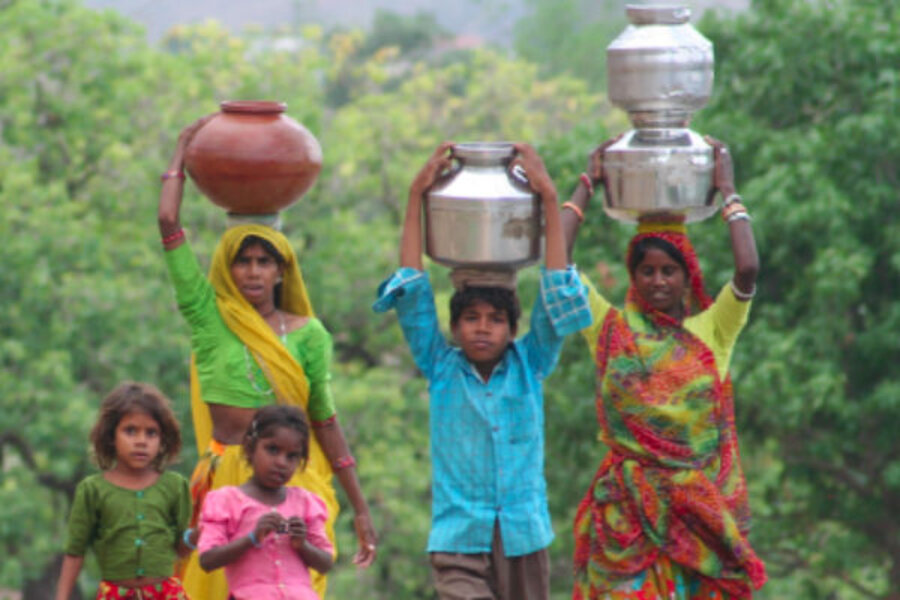Foster care abroad must serve shifting family models
Loading...
Every family is different. Families in India can be majorly categorized into two kinds: Joint families and Nuclear families. Joint families are people united in common relationships. It is a large social group in which the father, mother, their children, their brothers, spouses, and their parents all live together. Thus, these are the group of people who share almost everything with each other. On the contrary, nuclear families have only the parents and their children living together.
I am local to Udaipur, India, where Foster Care India is starting its work. I live in what is considered a joint family home with my parents, grandparents, aunts, uncles, and my cousins. While my family structure is considered more traditional, the family model in India as a whole is shifting to include more nuclear families, consisting of just parents and children.
India is known for its rich culture, its traditions, and the love among families; and not just biological families, but those joint families that include many loved ones outside of immediate family relations.
In the context of foster care, the structure of the family unit is an important factor to look at. As the country’s population is moving toward a more nuclear family concept, there is a higher demand for a foster care system. And India has no organized foster care system, most of the population is not even aware of the concept of foster care.
As an Indian, I have seen that the type of families makes a huge difference in each child’s development. I consider it an advantage, living in a joint family, that even if anything happens to a child’s parents, there are still the family members who can take care of the child. Also, from a child’s perspective, even though they may have lost their parents, there are still individuals in their immediate family surroundings to whom they are emotionally attached and they feel they have someone to support them.
When it comes to a nuclear family, the feeling of having someone related to them is totally gone with the death of their parents. The only option left with a child is of a shelter home or orphanage for support.
Now is the time to introduce the concept of foster care into the Indian community.
But the need for change and acceptance of a change is different.
Steeped in cultural traditions, customs, beliefs, and societal norms, Indian society, in many ways, is not expected to easily accept a new concept that stands a little different from the ones they were following for generations.
A nuclear family model – a small nuclear family of two to three people – is potentially more open to foster youth because of the freedom the model offers to make such life-changing decisions, versus a joint family of decision making among many generations.
But change takes time and education. More than 40 percent of the Indian population is between the ages of 14 to 25. They are more sensitive, educated, and responsive to social issues, which can provide a positive reinforcement to their lives, leading to support of new concepts such as a foster care system in their country.
Speaking with Ian Anand Forber-Pratt, executive director of Foster Care India, offers some international context to support the importance of bolstering family units in India.
“Foster Care India is lucky to have people like you, Kripa, because without a ground level understanding, development isn’t possible,” he says. “For foster care to take root in a society, I believe we need to know the heart beat and pulse of the local community. As we’ve been doing research, we’ve learned that, for instance, here in Udaipur, only 3 percent of the community was even aware of foster care.”
Of those polled by Foster Care India, many families appreciated the idea, but were cautious about considering themselves ready to foster. Out of a sample of 650 households, the majority listed “Not the right time in life” and “Immediate family influence” as reasons to not foster. The second response aligns with cultural concerns and resistance to change.
According to Mr. Forber-Pratt, “The introduction of a foster care system has been attempted in India multiple times in the 1980s, 1990s, and 2000s, by accomplished child protection social workers. Therefore, we are often asked, what makes your work any different?”
“The answer is twofold; A) India is ready," he says, "and B) the entire globe is pushing for family-based care for children.”
In 1989, the United Nations Convention on the Rights of the Child placed a special importance on the family unit. The UNCRC goes so far as to include this in the preamble: “Recognizing that the child, for the full and harmonious development of his or her personality, should grow up in a family environment, in an atmosphere of happiness, love and understanding.”
India ratified the UNCRC code in 1992. However, the larger push in recent years for family based care came in two documents. In 2009, The Indian Integrated Child Protection Scheme (for India only) and the UN Alternative Care Guidelines (meant for global adaptation). Around this time, the Indian government started calling for non-profit partnerships to strengthen existing systems and introduce new foster care, kinship care, and adoption systems to local communities.
Newspaper articles, discussion groups, and government policies began to emerge and, to date, New Delhi (a union territory and the capital of India) and Goa (a union territory) have passed foster care “rules,” and Karnataka (a state in Southern India) has rules in a draft form.
“We at Foster Care India are in the process of working with the local government to introduce rules for Rajasthan,” said Forber-Pratt.
Until recently, India was predominantly run with a joint family model. Though this generalizes a bit, essentially it means that, if a family had a problem and came to the government’s attention, the government would re-direct them to handle the problem among themselves. However, the world is changing, nuclear families are becoming more frequent, and they are quickly sprinting away from the joint families in regards to cultural and social differences.
Because of this emerging model, there is a need for the government, and its non-profit partners, to take an active role in the care of children. This a monumental task, as India thinks through how to provide for more than 1.2 billion people. Foster Care India is excited to do its part to help the existing systems answer this question.
The Christian Science Monitor has assembled a diverse group of the best family and parenting bloggers out there. Our contributing and guest bloggers are not employed or directed by the Monitor, and the views expressed are the bloggers' own, as is responsibility for the content of their blogs. Kripa Devpura is a member of the Foster Care India organization, which can be found at fostercareindia.org.








